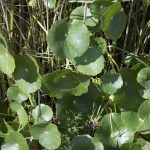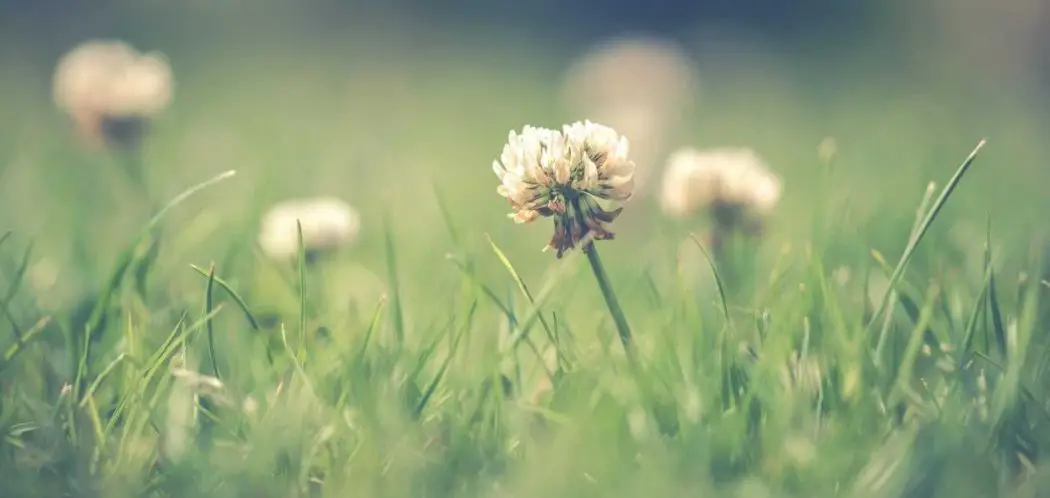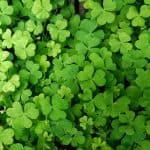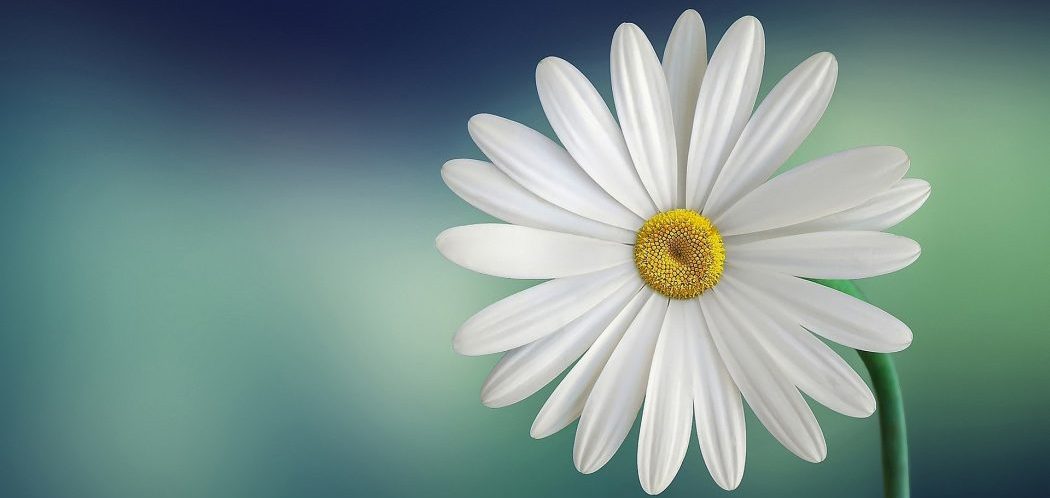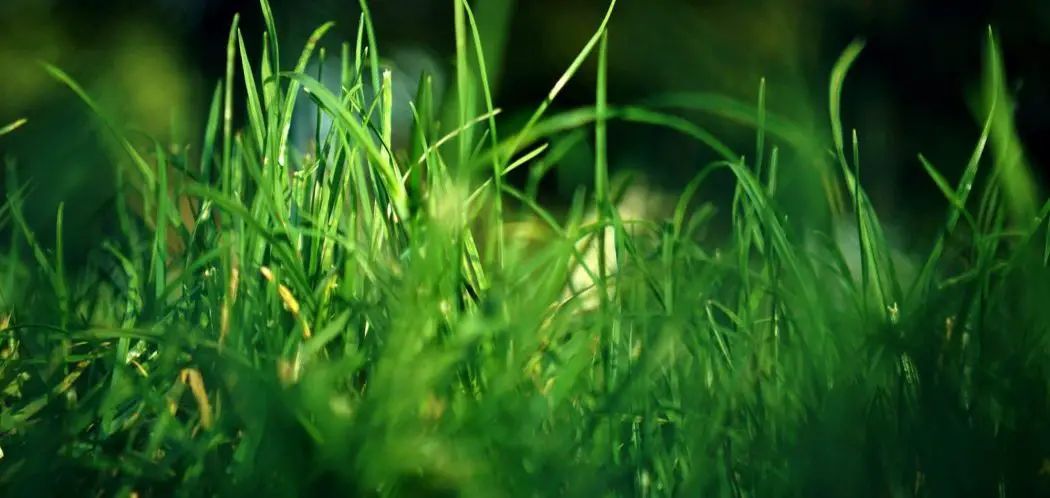The lily pad is the leaf of the water lily, and they do well in ponds. The leaves appear to float on top of the water, and there are 70 different species found in tropical and temperate zones. The lily pad is able to repel moisture, which is why it floats, but it is attached to a stem that extends into the floor of the pond, and it is rooted there. There are some weeds that look like lily pads, but they don’t always grow in water.
Dollarweed (Pennywort)
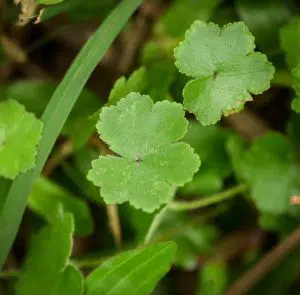
Dollarweed is a perennial weed that grows in warm seasons. It is dark green, and the leaf resembles a lily pad. It is the size of a silver dollar, which is where it gets its name. The leaves are round and fleshy, and they measure between one and two inches in diameter. The edges are scalloped. It is low-growing, and it spreads by seeds, tubers, and rhizomes.
Dollarweed loves water and can float. If there is dollarweed present, it indicates moisture in the area. If you find dollarweed in your yard, you may need to reduce your irrigation frequency. This is an effective way to control it. It is important to try to prevent it, which is much easier than trying to get rid of it.
Dichondra

Dichondra plants are part of the family of morning glories. They are low growing, spreading plants, and their leaves look like lily pads. Some people do use them as ground cover or as a lawn substitute. Other people grow them in containers and let them spill over with their spreading foliage.
They have tight clusters of round leaves that can be anywhere from green to silver, and they usually bloom in the early summer. They are toxic to people and animals, and the plant is vigorous and easily becomes invasive. It grows well in full sun, but it can grow in partial shade. It does best in sandy loam soil. It doesn’t tolerate highly trafficked areas. It is seen mostly in cooler coastal areas.
Creeping Charlie
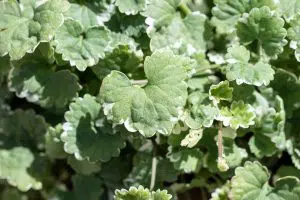
Creeping Charlie is another invasive ground cover that will compete with grass, and it is rapidly spreading. It first came to North America in the 1800s from Europe as an ornamental plant. Today, it is a lawn weed that is difficult to kill. It is also called ground ivy or catfoot. It is an aromatic evergreen that is related to mint. It is perennial, and it grows in moist and shady areas. It also tolerates sun.
Creeping Charlie spreads from seeds, stems that root, and roots or rhizomes. It is hard to get rid of because even one tiny piece of the plant can result in a new plant. Its leaves can be anywhere from dark green to purple, and it grows funnel shaped flowers that are purple.
Gotu Kola
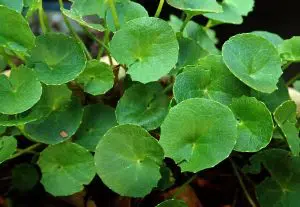
Also a pennywort, this perennial herb is a relative of dollarweed. Its official name is Centella asiatica, and it is a perennial herb found in tropical regions. It has been used in herbal medicines for many years. In fact, it has insecticidal properties against mosquitoes and against parasites that can infect cattle.
It is a low growing plant, and it has leaves that look like lily pads. They are bright green and rounded. It is native to tropical climates in Indonesia, China, Japan, South Africa, and the South Pacific, but it grows in North America as well. It does best in zones 9b and above. They can be aggressive, so people who choose to grow this plant do it in containers.
Hydrocotyle Umbellata (Marsh Pennywort)
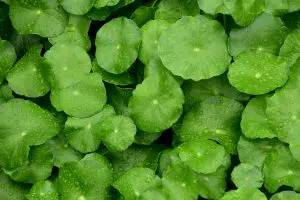
Another pennywort that looks like lily pads is Hydrocotyle umbellata. It is a low growing perennial that grows dense tufts of round, shiny, green leaves. They are notched or scalloped around the edges. The stems are sturdy and erect, and they do well in water.
They produce flowers that are pollinated by butterflies, and the seeds are eaten by waterfowl. It is native to the Americas, and it is found in moist soil along the shallow parts of ponds. It can grow across the surface of the water, or it can grow as ground cover in moist soil.
Pilea Peperomioides (Chinese Money Plant)
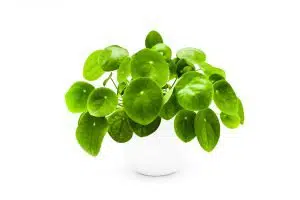
This plant is popular as a houseplant, and it is native to the Himalayas. It is also called the pancake plant, the Lefse plant, the missionary plant, and other names. It only needs water when the soil is dried out, and it requires good drainage. It prefers temperatures between 60 and 80 degrees Fahrenheit, and it does best in tropical conditions.
This plant loves humidity, and it does best in warm, tropical climates. It is fast growing and rapidly spreading as long as it has the conditions that allow it to thrive. The round green leaves resemble the lily pad, but it grows along the ground rather than in the water.
Leopard Plant
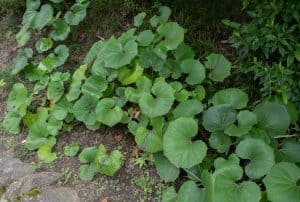
The leopard plant is an evergreen, and it forms clumps of foliage as a perennial. It blooms bright yellow flowers in the fall. The leaves are shiny, and it is native to the rocky coasts of Japan, Korea, and Taiwan. It grows in zones 7 through 10. It is a member of the sunflower family, and it loves moist, rich soil.
It can grow in partial sun or shade. It thrives when it has constant moisture, and it is found in shady woodlands, along pond banks, and as perennial borders. It spreads underground through its rhizomes.
Final Words
There are quite a few different plants with leaves that resemble lily pads. Most of them thrive in moist environments, and they are mostly fast growing, rapidly spreading ground cover type plants. They are often hard to remove once they take over an area. In spite of that, some people use them as ground cover in low-traffic areas.
Others plant them in pots and containers and let them spill over because they are attractive. They are usually not native, but have been brought in as ornamental plants.


